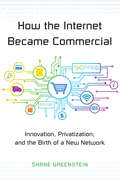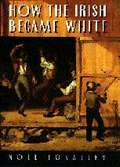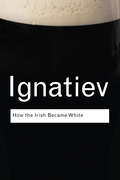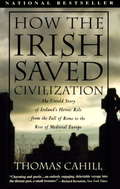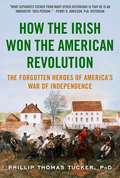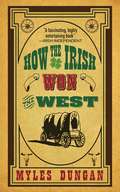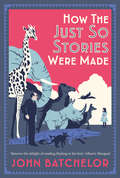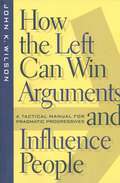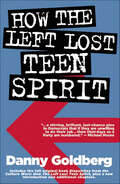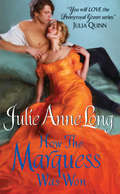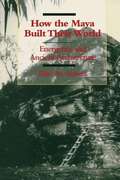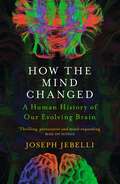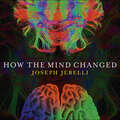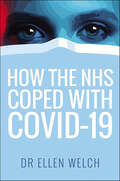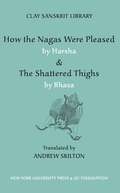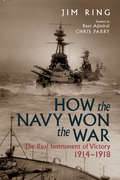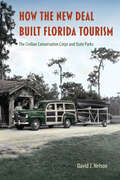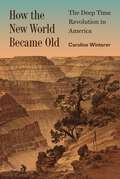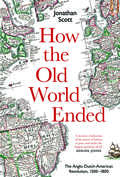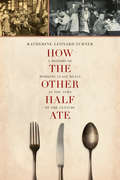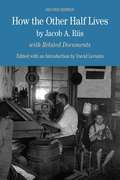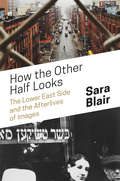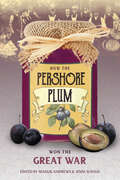- Table View
- List View
How the Internet Became Commercial
by Shane GreensteinIn less than a decade, the Internet went from being a series of loosely connected networks used by universities and the military to the powerful commercial engine it is today. This book describes how many of the key innovations that made this possible came from entrepreneurs and iconoclasts who were outside the mainstream--and how the commercialization of the Internet was by no means a foregone conclusion at its outset.Shane Greenstein traces the evolution of the Internet from government ownership to privatization to the commercial Internet we know today. This is a story of innovation from the edges. Greenstein shows how mainstream service providers that had traditionally been leaders in the old-market economy became threatened by innovations from industry outsiders who saw economic opportunities where others didn't--and how these mainstream firms had no choice but to innovate themselves. New models were tried: some succeeded, some failed. Commercial markets turned innovations into valuable products and services as the Internet evolved in those markets. New business processes had to be created from scratch as a network originally intended for research and military defense had to deal with network interconnectivity, the needs of commercial users, and a host of challenges with implementing innovative new services.How the Internet Became Commercial demonstrates how, without any central authority, a unique and vibrant interplay between government and private industry transformed the Internet.
How the Irish Became White
by Noel IgnatievOne way to be white, according to Ignatiev (history, Massachusetts College of Art) is to make sure nobody thinks you are Black. Ignatiev, also well known as a co-founder of the journal Race Traitor, notes that the Irish fled a homeland under foreign occupation and a caste system that reduced them to the lowest form of humanity. When they came to America they found their identity was defined instead by the color of their skin. Quickly, the oppressed became the oppressors and the new Irish immigrants proved they could be more brutal in their oppression of African Americans than those who had come before, with the Irish Protestant Ascendancy serving as role models. Published in 1995 and a source of controversy ever since, this is a significant part of Ignatiev's stated agenda to abolish the white race. Annotation ©2009 Book News, Inc., Portland, OR (booknews.com)
How the Irish Became White (Routledge Classics)
by Noel Ignatiev'…from time to time a study comes along that truly can be called ‘path breaking,’ ‘seminal,’ ‘essential,’ a ‘must read.’ How the Irish Became White is such a study.' John Bracey, W.E.B. Du Bois Department of Afro-American Studies, University of Massachussetts, Amherst The Irish came to America in the eighteenth century, fleeing a homeland under foreign occupation and a caste system that regarded them as the lowest form of humanity. In the new country – a land of opportunity – they found a very different form of social hierarchy, one that was based on the color of a person’s skin. Noel Ignatiev’s 1995 book – the first published work of one of America’s leading and most controversial historians – tells the story of how the oppressed became the oppressors; how the new Irish immigrants achieved acceptance among an initially hostile population only by proving that they could be more brutal in their oppression of African Americans than the nativists. This is the story of How the Irish Became White.
How the Irish Saved Civilization (The Hinges of History)
by Thomas CahillNATIONAL BESTSELLER • A book in the best tradition of popular history—the untold story of Ireland's role in maintaining Western culture while the Dark Ages settled on Europe. • The perfect St. Patrick's Day gift!Every year millions of Americans celebrate St. Patrick's Day, but they may not be aware of how great an influence St. Patrick was on the subsequent history of civilization. Not only did he bring Christianity to Ireland, he instilled a sense of literacy and learning that would create the conditions that allowed Ireland to become "the isle of saints and scholars"—and thus preserve Western culture while Europe was being overrun by barbarians. In this entertaining and compelling narrative, Thomas Cahill tells the story of how Europe evolved from the classical age of Rome to the medieval era. Without Ireland, the transition could not have taken place. Not only did Irish monks and scribes maintain the very record of Western civilization -- copying manuscripts of Greek and Latin writers, both pagan and Christian, while libraries and learning on the continent were forever lost—they brought their uniquely Irish world-view to the task. As Cahill delightfully illustrates, so much of the liveliness we associate with medieval culture has its roots in Ireland. When the seeds of culture were replanted on the European continent, it was from Ireland that they were germinated. In the tradition of Barbara Tuchman's A Distant Mirror, How The Irish Saved Civilization reconstructs an era that few know about but which is central to understanding our past and our cultural heritage. But it conveys its knowledge with a winking wit that aptly captures the sensibility of the unsung Irish who relaunched civilization.
How the Irish Won the American Revolution: A New Look at the Forgotten Heroes of America?s War of Independence
by Phillip Thomas TuckerWhen the Continental Congress decided to declare independence from the British empire in 1776, ten percent of the population of their fledgling country were from Ireland. By 1790, close to 500,000 Irish citizens had immigrated to America. They were was very active in the American Revolution, both on the battlefields and off, and yet their stories are not well known. The important contributions of the Irish on military, political, and economic levels have been long overlooked and ignored by generations of historians. However, new evidence has revealed that Washington’s Continental Army consisted of a far larger percentage of Irish soldiers than previously thought--between 40 and 50 percent--who fought during some of the most important battles of the American Revolution. Romanticized versions of this historical period tend to focus on the upper class figures that had the biggest roles in America’s struggle for liberty. But these adaptations neglect the impact of European and Irish ideals as well as citizens on the formation of the revolution. Irish contributors such as John Barry, the colonies’ foremost naval officer; Henry Knox, an artillery officer and future Secretary of War; Richard Montgomery, America’s first war hero and martyr; and Charles Thomson, a radical organizer and Secretary to the Continental Congress were all instrumental in carrying out the vision for a free country. Without their timely and disproportionate assistance, America almost certainly would have lost the desperate fight for its existence. Skyhorse Publishing, as well as our Arcade imprint, are proud to publish a broad range of books for readers interested in history--books about World War II, the Third Reich, Hitler and his henchmen, the JFK assassination, conspiracies, the American Civil War, the American Revolution, gladiators, Vikings, ancient Rome, medieval times, the old West, and much more. While not every title we publish becomes a New York Times bestseller or a national bestseller, we are committed to books on subjects that are sometimes overlooked and to authors whose work might not otherwise find a home.
How the Irish Won the West
by Myles DunganHere is the full story of the Irish immigrants and their decedents whose hard work helped make the West what it is today. Learn about the Irish members of the Donner party, forced to consume human flesh to survive the winter; mountain men like Thomas Fitzpatrick, who discovered the South Pass through the Rockies; Ellen "Nellie" Cashman, who ran boarding houses and bought and sold claims in Alaska, Arizona, and Nevada; and Maggie Hall, who became known as the "whore with a heart of gold." A fascinating and entertaining look at the history of the American West, this book will surprise many and make every Irish American proud.
How the Just So Stories Were Made: The Brilliance and Tragedy Behind Kipling's Celebrated Tales for Little Children
by John BatchelorA fascinating, richly illustrated exploration of the poignant origins of Rudyard Kipling&’s world-famous children&’s classic&“In this concise and remarkable book . . . Batchelor guides us expertly . . . drawing on multiple sources and making intriguing connections between Kipling&’s stories for children and for adults.&”—John Carey, The Sunday Times From "How the Leopard Got Its Spots" to "The Elephant&’s Child," Rudyard Kipling&’s Just So Stories have delighted readers across the world for more than a century. In this original study, John Batchelor explores the artistry with which Kipling created the Just So Stories, using each tale as an entry point into the writer&’s life and work—including the tragedy that shadows much of the volume, the death of his daughter Josephine. Batchelor details the playful challenges the stories made to contemporary society. In his stories Kipling played with biblical and other stories of creation and imagined fantastical tales of animals' development and man's discovery of literacy. Richly illustrated with original drawings and family photographs, this account reveals Kipling&’s public and private lives—and sheds new light on a much-loved and tremendously influential classic.
How the Left Can Win Arguments and Influence People: A Tactical Manual for Pragmatic Progressives (Critical America #58)
by John K WilsonIf we were to rely on what the pundits and politicians tell us, we would have to conclude that America is a deeply conservative nation. Americans, we hear constantly, detest government, demand lower taxes and the end of welfare, and favor the death penalty, prayer in school, and an absolute faith in the free market. And yet Americans believe deeply in progressive ideas. In fact, progressivism has long been a powerful force in the American psyche. Consider that a mere generation ago the struggle for environmentally sound policies, for women's rights, and for racial equality were fringe movements. Today, open opposition to these core ideals would be political suicide. Drawing on this wellspring of American progressivist tradition, John K. Wilson has penned an informal handbook for the pragmatic progressive. Wilson insists that the left must become more savvy in its rhetoric and stop preaching only to the converted. Progressives need to attack the tangible realities of the corporate welfare state, while explicitly acknowledging that "socialism is," as Wilson writes, "deader than Lenin." Rather than attacking a "right-wing conspiracy," Wilson argues that the left needs one, too. Tracing how well-funded conservative pressure groups have wielded their influence and transformed the national agenda, Wilson outlines a similar approach for the left. Along the way, he exposes the faultlines of our poll- and money-driven form of politics, explodes the myth of "the liberal media," and demands that the left explicitly change its image. Irreverent, practical, and urgently argued, How The Left Can Win Arguments and Influence People charts a way to translate progressive ideals into reality and reassert the core principles of the American left on the national stage.
How the Left Lost Teen Spirit: (and How They're Getting It Back!)
by Danny GoldbergIncludes Goldberg’s groundbreaking book Dispatches from the Culture Wars, plus a new author introduction and additional chapters.“Danny Goldberg’s memoir contains the powerful reflections of the most progressive activist in the recording industry. His candor, vision and sense of humor is infectious.” —Cornel West“If Lester Bangs and Maureen Dowd had a love child, he’d have written this book.” —Arianna HufflingtonWhen did American government become the enemy of American pop culture?Music insider and progressive activist Danny Goldberg has spent decades tuning in to the rhythms and voices that speak straight to the hearts and desires of America’s youth. In that time, one fact has become increasingly clear: Our venerable political leaders are too often tone deaf. In this startling, provocative book, Goldberg shows how today’s professional public servants have managed to achieve nothing less than the indefensible, wholesale alienation of an entire generation.
How the Marquess Was Won
by Julie Anne LongThe Scandal Sheets call him Lord Ice. Ruthless, cold, precise, Julian Spenser, Marquess Dryden, tolerates only the finest- in clothes, in horseflesh, in mistresses. And now he's found the perfect bride, the one whose dowry will restore his family's shattered legacy and bring him peace at last: the exquisite heiress Lisbeth Redmond. She's about to play with fire... But one unforgettable encounter with Lisbeth's paid companion, Phoebe Vale, and the Marquess is undone. This quiet girl with the wicked smile and a wit to match is the first person to see through the icy faÇade to the fiery man beneath. But their irresistible attraction is a torment as sweet as it is dangerous, for surrendering to their desire could mean losing everything else they ever wanted.
How the Maya Built Their World
by Elliot M. AbramsMaya architecture is often described as "massive" and "monumental," but experiments at Copan, Honduras, convinced Elliot Abrams that 300 people could have built one of the large palaces there in only 100 days. In this groundbreaking work, Abrams explicates his theory of architectural energetics, which involves translating structures into volumes of raw and manufactured materials that are then multiplied by the time required for their production and assembly to determine the labor costs of past construction efforts. Applying this method to residential structures of the Late Classic period (A. D. 700-900) at Copan leads Abrams to posit a six-tiered hierarchic social structure of political decision making, ranging from a stratified elite to low-ranking commoners. By comparing the labor costs of construction and other economic activities, he also prompts a reconsideration of the effects of royal construction demands on commoners.
How the Mind Changed: A Human History of our Evolving Brain
by Joseph JebelliThe extraordinary story of how the human brain evolved... and is still evolving. We've come a long way. The earliest human had a brain as small as a child's fist; ours are four times bigger, with spectacular abilities and potential we are only just beginning to understand.This is How the Mind Changed, a seven-million-year journey through our own heads, packed with vivid stories, groundbreaking science, and thrilling surprises. Discover how memory has almost nothing to do with the past; meditation rewires our synapses; magic mushroom use might be responsible for our intelligence; climate accounts for linguistic diversity; and how autism teaches us hugely positive lessons about our past and future.Dr Joseph Jebelli's In Pursuit of Memory was shortlisted for the Royal Society Science Book Prize and longlisted for the Wellcome. In this, his eagerly awaited second book, he draws on deep insights from neuroscience, evolutionary biology, psychology, and philosophy to guide us through the unexpected changes that shaped our brains. From genetic accidents and environmental forces to historical and cultural advances, he explores how our brain's evolution turned us into Homo sapiens and beyond.A single mutation is all it takes.
How the Mind Changed: A Human History of our Evolving Brain
by Joseph JebelliThe extraordinary story of how the human brain evolved by Royal Society Prize shortlisted neuroscientist, Joseph Jebelli.No other life form on the planet has generated a brain like ours. How did a bundle of cells weighing just 1.2 kg give rise to conscious, self-aware beings capable of understanding time, language, mathematics and music, of exploring outer space and sequencing their own DNA? The answer to such questions is a 7 million year saga. How the Mind Changed is the definitive audiobook on human brain evolution: a sweeping natural history. Beginning with the first primate brain and the rise of our present-day, large human brain, it will describe the remarkable origin of our species' most mysterious organ, how it has developed, and how it will change in the future. To study the brain is to study the essence of what makes us human.(P) 2022 Hodder & Stoughton Limited
How the NHS Coped with Covid-19
by Ellen Welch2020 will forever be remembered as the year the Coronavirus pandemic changed life as we know it across the World. Economies crashed, livelihoods were eradicated, and thousands of lives were shortened or devastated by the effects of this novel virus. In the UK, the National Health Service was thrust into the limelight as the country watched our healthcare system respond to the consequences of this disease. This book traces a timeline of the COVID-19 pandemic, highlighting key events in how the UK and the NHS approached these unparalleled events. Comparisons are made with tactics used around the globe and the decisions of our leaders questioned. Alongside the facts, are stories. Every one of us has a ‘Covid story’ to tell, and this book is a collection of some of these stories from our frontline staff. As the country went into rapid lockdown in March, the staff of the NHS donned their PPE and continued to go to work. They tell us what peak pandemic was like in the emergency departments, wards, ICUs, GP practices, care homes and the ambulances of the UK. We hear from a nurse who became a covid patient in her own ICU; staff from the rapidly constructed Nightingale hospital; a GP who returned from retirement to assist with the response; as well as stories from international healthcare professionals such a as a cruise ship nurse in the Caribbean, a public health consultant in Australia and ED doctors in South Africa.
How the Nagas Were Pleased by Harsha & The Shattered Thighs by Bhasa (Clay Sanskrit Library #48)
by Harṣa and Bhāa, Translated by Andrew SkiltonTwo tragic plays that break the rules: both show the hero dying on stage, a scenario forbidden in Sanskrit dramaturgy. King Harsha's play, composed in the seventh century, re-examines the Buddhist tale of a magician prince who makes the ultimate sacrifice to save a hostage snake (naga). The Shattered Thighs, attributed to Bhasa, the illustrious predecessor to ancient Kali·dasa, transforms a crucial episode of the Maha·bhárata war. As he dies from a foul blow to the legs delivered in his duel with Bhima, Duryódhana's character is inverted, depicted as a noble and gracious exemplar amidst the wreckage of the fearsome battle scene.
How the Navy Won the War: The Real Instrument of Victory, 1914–1918
by Jim RingVerdun, the Somme, Tannenberg and Passchendaele. These epics of destruction and futility are such bywords for the First World War that – Jutland apart – we forget the role played by sea power in the war to end war. The great global conflict is too often narrowed to the fields of Flanders and the plains of Picardy. Now, award-winning biographer and naval historian Jim Ring has revisited the story to redress the balance. He emphasises how Great Britain, ‘the great Amphibian in Churchills words, was able to move its army anywhere in the world. The Navys very existence deterred any attempt at invasion, and its great ships kept the German High Sea fleet at bay; lastly, the Navy gradually starved the Kaisers nation of war materiel and food. Choosing fourteen turning-points of the war, he explores the relative contributions made by land and sea power to the eventual outcome of the conflict in 1918. For example, the abandonment of the Imperial German Navys ambition for a decisive naval surface battle was at least as important as Jutland itself, while Lloyd Georges imposition of the convoy system on, it must be said, a reluctant Admiralty turned the battle against the U-boats; the mine and the submarine altered the course of war as much or more so than the tank. The book is also a study of character as well as of action, of decision-making as much as the sweep of battle, and his critique of the warlords of both the Entente and the Central Powers – of Ludendorff and Churchill, of Haig, Kitchener and Foch, of Fisher, Jellicoe, Beatty and Scheer – is refreshing, his conclusions surprising. ‘The Great War was fought on land but won at sea. Not so, says Ring, but much closer to the truth than we tend to believe. A century after the catastrophic events of the Great War, in the midst of a time at which the country is once again pondering its identity, it is worth reciting the words of John Keegan: ‘No Britain of my generation, raised on food fought through the U-boat packs in the battle of the Atlantic can ever ignore the narrowness of the margin by which sea power separates survival from starvation in the islands he inhabits. The Royal Navy was key to the survival of Great Britain and to eventual victory in 1918. Written with passion and verve, this book offers a very different way of looking at the conflict – if you think you understand the Great War, think again.
How the New Deal Built Florida Tourism: The Civilian Conservation Corps and State Parks
by David J. NelsonFlorida Historical Society Rembert Patrick Award Florida Book Awards, Silver Medal for Florida Nonfiction Countering the conventional narrative that Florida’s tourism industry suffered during the Great Depression, this book shows that the 1930s were, in reality, the starting point for much that characterizes modern Florida’s tourism. David Nelson argues that state and federal government programs designed to reboot the economy during this decade are crucial to understanding the state today. Nelson examines the impact of three connected initiatives—the federal New Deal, its Civilian Conservation Corps program (CCC), and the CCC’s creation of the Florida Park Service. He reveals that the CCC designed state parks to reinforce the popular image of Florida as a tropical, exotic, and safe paradise. The CCC often removed native flora and fauna, introduced exotic species, and created artificial landscapes that were then presented as natural. Nelson discusses how Florida business leaders benefitted from federally funded development and the ways residents and business owners rejected or supported the commercialization and shifting cultural identity of their state. A detailed look at a unique era in which the state government sponsored the tourism industry, helped commodify natural resources, and boosted mythical ideas of the “Real Florida” that endure today, this book makes the case that the creation of the Florida Park Service is the story of modern Florida.
How the New World Became Old: The Deep Time Revolution in America (Princeton Modern Knowledge #1)
by Caroline WintererHow the idea of deep time transformed how Americans see their country and themselvesDuring the nineteenth century, Americans were shocked to learn that the land beneath their feet had once been stalked by terrifying beasts. T. rex and Brontosaurus ruled the continent. North America was home to saber-toothed cats and woolly mammoths, great herds of camels and hippos, and sultry tropical forests now fossilized into massive coal seams. How the New World Became Old tells the extraordinary story of how Americans discovered that the New World was not just old—it was a place rooted in deep time.In this panoramic book, Caroline Winterer traces the history of an idea that today lies at the heart of the nation&’s identity as a place of primordial natural beauty. Europeans called America the New World, and literal readings of the Bible suggested that Earth was only six thousand years old. Winterer takes readers from glacier-capped peaks in Yosemite to Alabama slave plantations and canal works in upstate New York, describing how naturalists, explorers, engineers, and ordinary Americans unearthed a past they never suspected, a history more ancient than anyone ever could have imagined.Drawing on archival evidence ranging from unpublished field notes and letters to early stratigraphic diagrams, How the New World Became Old reveals how the deep time revolution ushered in profound changes in science, literature, art, and religion, and how Americans came to realize that the New World might in fact be the oldest world of all.
How the Old World Ended: The Anglo-Dutch-American Revolution 1500-1800
by Jonathan ScottA magisterial account of how the cultural and maritime relationships between the British, Dutch and American territories changed the existing world order – and made the Industrial Revolution possible Between 1500 and 1800, the North Sea region overtook the Mediterranean as the most dynamic part of the world. At its core the Anglo-Dutch relationship intertwined close alliance and fierce antagonism to intense creative effect. But a precondition for the Industrial Revolution was also the establishment in British North America of a unique type of colony – for the settlement of people and culture, rather than the extraction of things. England&’s republican revolution of 1649–53 was a spectacular attempt to change social, political and moral life in the direction pioneered by the Dutch. In this wide-angled and arresting book Jonathan Scott argues that it was also a turning point in world history. In the revolution&’s wake, competition with the Dutch transformed the military-fiscal and naval resources of the state. One result was a navally protected Anglo-American trading monopoly. Within this context, more than a century later, the Industrial Revolution would be triggered by the alchemical power of American shopping
How the Other Half Ate
by Katherine Leonard TurnerIn the late nineteenth and early twentieth centuries, working-class Americans had eating habits that were distinctly shaped by jobs, families, neighborhoods, and the tools, utilities, and size of their kitchens--along with their cultural heritage. How the Other Half Ate is a deep exploration by historian and lecturer Katherine Turner that delivers an unprecedented and thoroughly researched study of the changing food landscape in American working-class families from industrialization through the 1950s. Relevant to readers across a range of disciplines--history, economics, sociology, urban studies, women's studies, and food studies--this work fills an important gap in historical literature by illustrating how families experienced food and cooking during the so-called age of abundance. Turner delivers an engaging portrait that shows how America's working class, in a multitude of ways, has shaped the foods we eat today.
How the Other Half Banks: Exclusion, Exploitation, and the Threat to Democracy
by Mehrsa BaradaranThe United States has two separate banking systems--one serving the well-to-do and another exploiting everyone else. Deserted by banks and lacking credit, many people are forced to wander through a Wild West of payday lenders and check-cashing services thanks to the effects of deregulation in the 1970s that continue today, Mehrsa Baradaran shows.
How the Other Half Lives
by Jacob RiisJacob Riis was one of the very few men who photographed the slums of New York at the turn of the century, when as many as 300,000 people per square mile were crowded into the tenements of New York's Lower East Side. The filth and degradation made the area a hell for the immigrants forced to live there. Riis was one of those immigrants, and, after years of abject poverty, when he became a police reporter for the New York Tribune, he exposed the shameful conditions of life with which he was all too familiar. Today, he is best remembered as a compassionate and effective reformer and as a pioneer photo-journalist.In How the Other Half Lives, New Yorkers read with horror that three-quarters of the residents of their city were housed in tenements and that in those tenements rents were substantially higher than in better sections of the city. In his book Riis gave a full and detailed picture of what life in those slums was like, how the slums were created, how and why they remained as they were, who was forced to live there, and offered suggestions for easing the lot of the poor. Riis originally documented all his studies with photographs. However, since the half-tone technique of photo reproduction had not been perfected, the original edition included mainly reductions in sketch-form of Riis' photographs. These could not begin to capture what Riis' sensitive camera caught on film. The anguish and the apathy, the toughness and the humiliation of the anonymous faces is all but obliterated in the sketches. This Dover edition includes fully 100 photographs, many famous, and many less familiar, from the Riis collection of the City Museum, and their inclusion here creates a closer conformity to Riis' intentions than did the original edition.
How the Other Half Lives: Studies among the Tenements of New York (Second Edition) (The Bedford Series in History and Culture)
by Jacob A. RiisJacob Riis's famed 1890 photo-text addressed the problems of tenement housing, immigration, and urban life and work at the beginning of the Progressive era. David Leviatin edited this complete edition of How the Other Half Lives to be as faithful to Riis's original text and photography as possible. Uncropped prints of Riis's original photographs replace the faded halftones and drawings from photographs that were included in the 1890 edition. Related documents added to the second edition include a stenographic report of one of Riis's lantern-slide lectures that demonstrates Riis's melodramatic techniques and the reaction of his audience, and five drawings that reveal the subtle but important ways Riis's photographs were edited when they were reinterpreted as illustrations in the 1890 edition. The book's provocative introduction now addresses Riis's ethnic and racial stereotyping and includes a map of New York's Lower East Side in the 1890s. A new list of illustrations and expanded chronology, questions for consideration, and selected bibliography provide additional support.
How the Other Half Looks: The Lower East Side and the Afterlives of Images
by Sara BlairHow New York’s Lower East Side inspired new ways of seeing AmericaNew York City's Lower East Side, long viewed as the space of what Jacob Riis notoriously called the "other half," was also a crucible for experimentation in photography, film, literature, and visual technologies. This book takes an unprecedented look at the practices of observation that emerged from this critical site of encounter, showing how they have informed literary and everyday narratives of America, its citizens, and its possible futures.Taking readers from the mid-nineteenth century to the present, Sara Blair traces the career of the Lower East Side as a place where image-makers, writers, and social reformers tested new techniques for apprehending America--and their subjects looked back, confronting the means used to represent them. This dynamic shaped the birth of American photojournalism, the writings of Stephen Crane and Abraham Cahan, and the forms of early cinema. During the 1930s, the emptying ghetto opened contested views of the modern city, animating the work of such writers and photographers as Henry Roth, Walker Evans, and Ben Shahn. After World War II, the Lower East Side became a key resource for imagining poetic revolution, as in the work of Allen Ginsberg and LeRoi Jones, and exploring dystopian futures, from Cold War atomic strikes to the death of print culture and the threat of climate change.How the Other Half Looks reveals how the Lower East Side has inspired new ways of looking—and looking back—that have shaped literary and popular expression as well as American modernity.
How the Pershore Plum Won the Great War
by Maggie Andrews Jenni WaughThe First World War was won not just on the battlefields but on the Home Front, by the men, women and children left behind. This book explores the lives of the people of Pershore and the surrounding district in wartime, drawing on their memories, letters, postcards, photographs, leaflets and recipes to demonstrate how their hard work in cultivating and preserving fruit and vegetables helped to win the Great War. Pershore plums were used to make jam for the troops; but ensuring these and other fruits and vegetables were grown and harvested required the labour of land girls, Boy Scouts, schoolchildren, Irish labourers and Belgian refugees. When submarine warfare intensified, food shortages occurred and it became vital for Britain to grow more and eat less food. Housewives faced many challenges in feeding their families and so in 1916 the Pershore Women’s Institute was formed, providing many women with practical help and companionship during some of Britain’s darkest hours in history.
